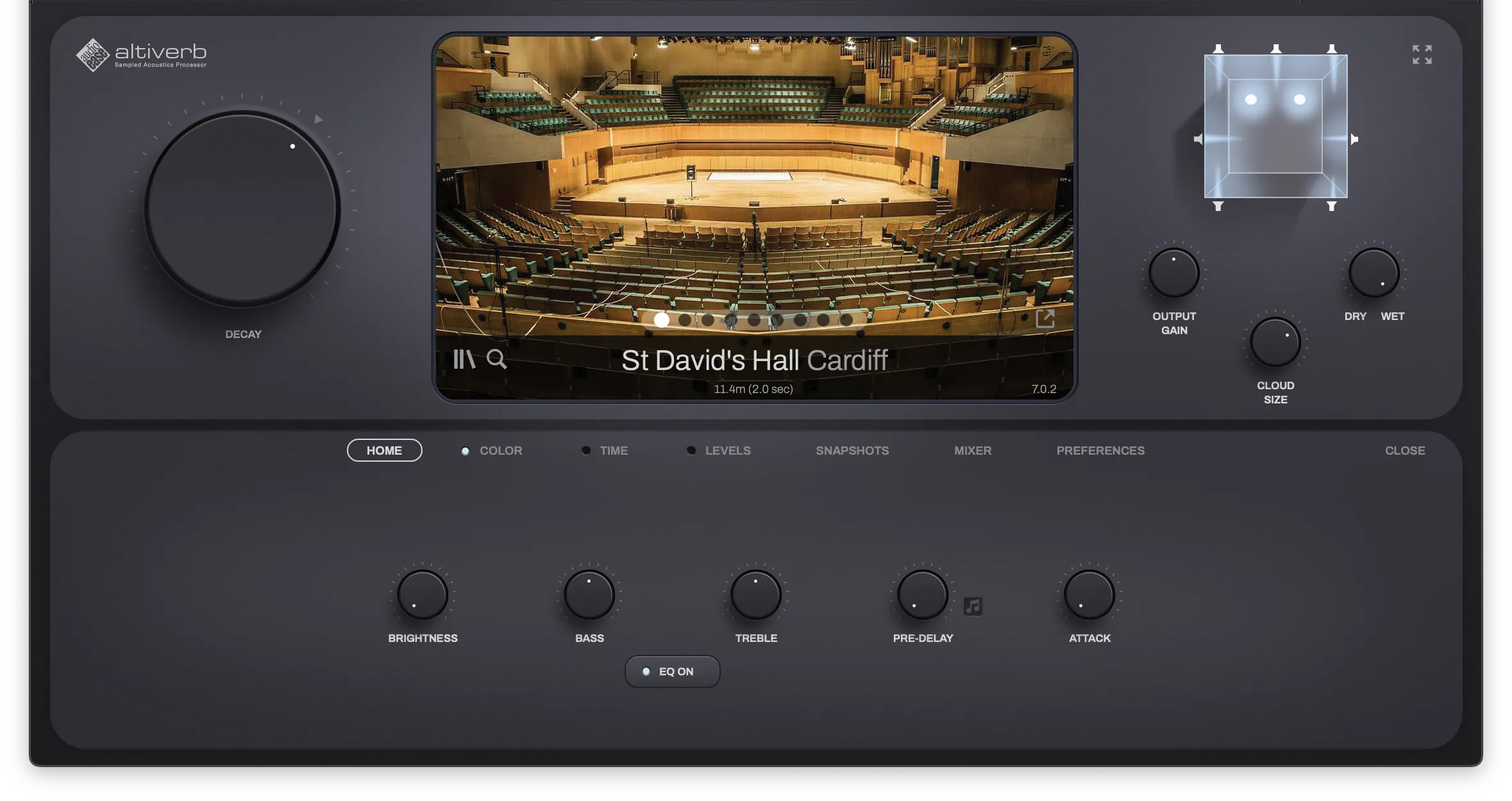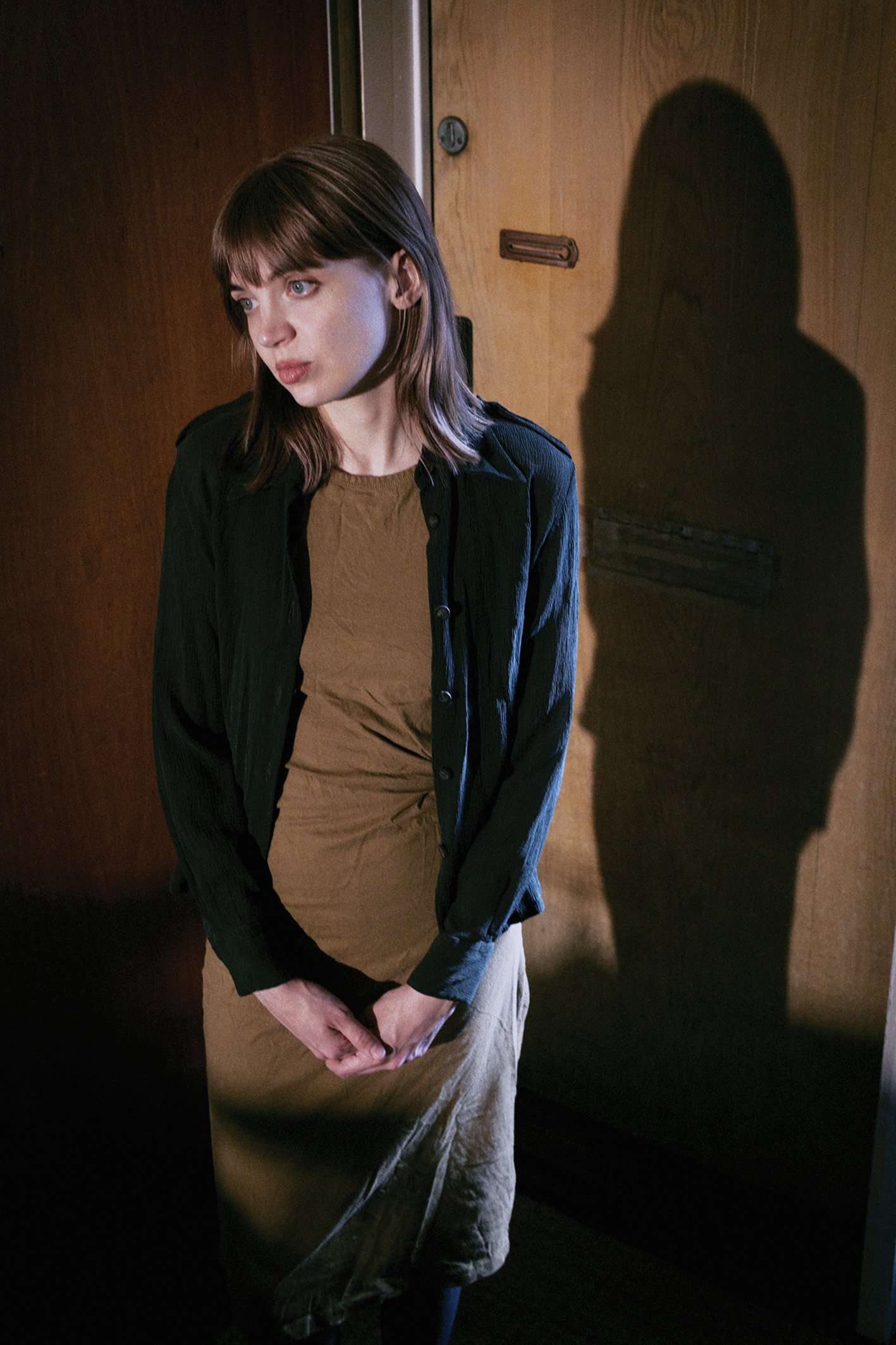Moonilena on hardware vs software and why she loves the "hiss" on her Yamaha TG33: "I like gear with personality. Everything is ‘perfect’ in software, and that can be a bit boring"
We spoke to the Stockholm-based creative about her technical approach to her aural constructs and the genesis of her captivating new album, Minnet

The vision of a future archive, staffed by soulless machines, tasked with curating and categorising the myriad fragmented memories of human emotions – and becoming baffled by the task – is an artistic conceit that resonates deeply in 2024. With the onrush of AI-fuelled plugins, DAWs and all-out generative music engines, a machine-led future, scrutinising human art and emotional expression in a way such as this, seems almost inevitable.
For Stockholm-based artist Moonilena, this concept proved a fruitful starting point for her own creativity. On her new ambient album, Minnet, Moonilena – real name Marlena Salonen – harnessed a selection of tools across both hardware and software, to build a dark yet tantalising listening experience that wallowed in the space between signal processing theory, and human emotion.“I wanted to make a concept out of memory,” Marlena tells us.
“I was studying signal theory and I was really fascinated by quantisation errors that occur when you go from analogue to digital. A signal might come through interpreted by a machine, similar to the original one, but with its intent obfuscated. With large amounts of data and over longer periods of time, this in a way also leads to distortion of memory. Kind of akin to memory loss. So, basically, the concept for the album is an artistic interpretation of these phenomena of degenerated memory and memory corruption.”

Marrying ambient, lo-fi and sound design concepts with an enormous sense of space, harnessed from an abandoned iron ore extraction facility in Mimerlaven, Sweden, Minnet is an arresting listen, merging layered harmonies with drone textures and those aforementioned ‘broken-down’ sounds.
It’s a development of a journey that has spanned a multitude of shapes, from dream house (on previous EP, Tiny Portals) to avant-garde sound design and tape-loop concocted pieces (on 2019’s split LP with Atonet, Boiling Sea), We wonder how the writing process of this ambient, almost sci-fi-leaning Minnet began?
“I was doing a show for a festival in Norberg, Sweden, and it was based in the really old Mimerlaven mining facility. It’s a space that had a really long reverb tail, so I couldn’t play my older stuff really at the festival, which is more rhythmic and drum-based. I wanted to create something special to perform in this facility.”
Moonilena’s machine data mining concept had a synergy with the space, and the ideas that make up the album’s eight tracks began to form. Central to the creative toolkit is the rather unconventional Yamaha TG33. This classic 32-voice digital FM synthesiser from 1990 proved a tricky one to program however, requiring the assistance of a rather slick software bridge. “I actually used Coffeeshopped Patch Base to create patches in my Yamaha TG33,” she says.
Want all the hottest music and gear news, reviews, deals, features and more, direct to your inbox? Sign up here.

“[The synth] is a really old unit and is really hard to program as the screen is really small. So, I used Patch Base a lot. With that you can get a much better overview of the different parameters, and how the operators interact and shape the sound. The TG33’s waveform bank is made up of sampled sounds that are very lo-fi. They sound a bit weird – so Patch Base enables me to manipulate them and stretch them out and stuff.
“It also has a randomising button that is called Roll The Dice, which can generate some really interesting sounds, but since basically all parameters are randomised, sometimes that can make things sound really bad – so you have to adjust it a bit. Before I got Patch Base, it took me about three hours to figure out how to remove a voice from a preset, it was so hard to program!”
We have to ask why Marlena doesn’t just plump for a soft synth? “Everything is ‘perfect’ in software, and often that can be a bit boring. I like gear with personality. Maybe it’s because I’m a bit older,” she continues. “If I was a bit younger I’d probably use software more, but yeah, it doesn’t matter if it’s digital, and I mean, the software is also digital. I like the hissing sound that the TG33 makes, it adds so many extra qualities that I like. It feels more real in some weird way.”

The stone's dream
Whilst the main sonic shaping was driven by this marriage of control software with classic hardware, the other tools that Marlena relied on included her main Logic-based workflow, and a plethora of Melda plugins: “I used Logic as my main DAW. I only know Logic, but I tried to switch to Ableton Live recently.
“I started out making punk music when I was younger, so I think Logic felt a bit more suitable for the stuff I was making back then. It’s how DAWs should work, I think – like a tape recorder. Ableton Live looks a little scarier. I’m on Logic Pro 10.7.4 and I’m probably going to stay there for a while since everything is stable. Why update?”

Marlena’s other tools spanned wares from the likes of Melda Production, FabFilter and iZotope. “I also used Waves Kramer Master Tape plugin,” Marlena tells us. “I do have an actual reel-to-reel, but it always breaks down, so when I found this I realised it was much more useful. I tend to put it on things like synth pads.” Marlena also used Soundtoys’ versatile creative effect plugin Crystallizer as a replacement for her previous Swiss-army knife Melda’s MGranularMB plugin, converting signals and instruments via a combination of pitch shifting and reverse echo.
One of the album’s most memorable cuts, the hypnotic Stenens Dröm (which translates as ‘The Stone’s Dream’) features a pulsing beat at its heart. Notably, it’s the only part of the record to have a beat. We ask Marlena why that is, and whether, as a more abstract, artistically-aligned creative, she has to fight the urge to add more conventional elements and structures such as beats and melodies? “I always want to put beats on stuff,” she admits.

“This time, I made the choice to not use so many beats because I needed to think about the space – beats just sound like mush when you’re dealing with the sort of reverb tail I was working with. It’s cool when it works, but it’s really hard work. There are a lot of artists who’ve been struggling with that, I didn’t want to put myself through it. To put the beats together for Strenens Dröm, I used an old Korg Electribe drum machine, and then I used Melda MTurbo Delay.”
We wonder what piece Marlena would cite as her favourite part of the album? “It’s so hard [to decide], I did it as one big piece, really. When I worked on the album I had been working with an artist and had been making soundtracks for her projections. I was so used to just making one giant piece with its parts all being quite seamless. That idea fed through to this album.”

Having said that, she does have a track that she’s particularly pleased with: “I think for me, the third track – Dom Bor Under Taket – is my favourite. It’s inspired by a family of swallows that live on my roof. The title translated means ‘They Live Under the Roof’. I made these robotic, swallow-like sounds that was really similar to how they sound.”
The track’s inspiration slides into the broader thematic concern of the record, with the machine-world trying to understand, and replicate, the natural: “When I was making that track, I’d read that scientists were making bird noises in the forest because there’s a few breeds that are dying out, and it affects the other animals. I had this idea of walking in the forest, and these large speakers would be playing bird sounds. It’s actually quite a scary thought.”
Making Moloton
We ask Marlena if she can take us back to the beginning of her journey and detail how she grew into the artist that she is today? “First, I started out playing in a punk band with my sister. I played bass guitar, but that didn’t last long. Then I got into art school after high school.

“I was studying visual art, but then we had this sound course which really inspired me, so my bachelor degree work became mostly sound-based. My teachers were a bit disappointed! There was some audio/visual stuff but it was mostly sound. After that, I started learning how to make sound art and music on my own.”
Marlena keeps the visual art strand alive though, by creating most of the cover art for artists on her label, Moloton, which she co-runs with fellow musician Linus Hillborg (aka Atonet).“The label started in 2017,” she says. “We just felt there was a lot of good music in Stockholm that wasn’t being released – it was hard for people who made more ambient and avant-garde-leaning records to get their stuff heard. I thought it was a big shame. A lot of them were my friends, and people around me who were making music.”
I personally think it’s generally easier to write music by yourself
Marlena has collaborated with both Linus and artist Sonja Tofik; we wonder if collaboration is an important part of her creative life? “I think it’s really fun. I like providing the audio/music component for visual artists. I don’t like playing live so much, it can be fun, but I like to stay in the background!”
Salonen admits that it can be quite hard to really make music with somebody else, “But it’s also fun,” she stresses. “I did a collaborative record with the artist Sonja Tofik and that was when Linus and I first started the label. We had our first merch table at a festival and we realised that we kind of had too few releases to fill the table up at that point. So me and Sonja did the collaboration just to have one more release, but it turned out really nice. Anyways, I personally think it’s generally easier to write music by yourself.”
Space and time
In the world of Moonilena, space is a critical character. “Spaces have always been important to me. I’ve also worked on more art-angled sound installations, but the thought process there is more to get sound to work in a room, whereas this is making sound for the room. I thought it’d conjure a better mood, like a deserted liminal space mood to it. It’s eerie but still calming. It has a church-like feeling, but in a depressing way!”
As much of the work captured on Minnet was designed to be performed at the Mimerlaven facility, few additional reverbs were used. “The space has a really long reverb tail, so I tried to not use any additional reverbs at all when working. The impulse response was from the room itself.

“First I used a ‘Warehouse’ impulse response preset within Audio Ease’s Altiverb, but then I got hold of an impulse response recording from the actual space, made by composer Daniel M. Karlsson, which he had put up for free on his website. Once I had that, I used it on everything. It was such fun to work with, I kept wondering how certain sources would sound on it.”
As Marlena says, having a virtual version of that space was akin to having the room safely packaged in her computer. “I wasn’t sure how it was going to sound, depending on where you were standing in the room. I was trying to use Melda’s MGranularMB because I wanted to make sounds that had interesting tails. [When mixing] the final record, I added a few more reverbs into the mix.”
I started out as a visual artist and wanted to make comics before getting into music
Among the myriad studios that Marlena worked at was EMS (Elektronmusikstudion). “They have everything there. I was working with some other artists there, but in my spare time, I worked on Minnet.”
With this reactive and unpredictable use of space, we wonder if Marlena has an idea of what the final track will sound like as she’s making it, or whether she’s open to being led by experimentation? “Both – sometimes I start by experimenting, but sometimes I might have a short story in the back of my mind. As I say, I started out as a visual artist and wanted to make comics before getting into music. With that in mind, I usually have an imagined short story in my head when I’m making stuff to generate inspiration.”
So how did Marlena know when a track was finally completed? “I just knew if it felt that I liked it,” Marlena tells us. “I have a big problem with that. I never think stuff is done, but I had the pressure on this as I had to get it ready for the festival. I recently had a baby, also, so my boyfriend was like, ‘you’re crazy to burn yourself out like that, just use old material for the show!’ But I had to do it. I think that was a good motivation. I had a short time-frame so I couldn’t really over-work it.”

Creative curation
As Marlena intends listeners to experience Minnet as one cohesive piece, we wonder what her views are on the modern streaming-dominated landscape, and the (perhaps overstated) lack of engagement with albums as a medium by listeners who might be more concerned with building their own playlists?
“I’ve done a lot of work as a DJ,” she says, “and I think people get so greedy, they pick and choose the best songs from the whole album, but they miss the [bigger] picture when they do that. I think it’s kind of changing, now – after the pandemic, people are more open to listen to music at home, and appreciate culture a bit more than they did before, I think.”

Marlena continues: “I really don’t like streaming in general, mostly because it makes you listen to bad music. Everything is there so you can often get into rabbit holes of nostalgia. I guess it can be good if you know how to use it. I mostly listen to records. I do like DJ mixes, though – they can have the same quality as a record. If it’s a nice selection – there’s creative curation and you can also tell a story, or set a mood in a good way.”
So, what’s next on Marlena’s agenda, following the release of Minnet? “I’m actually working with a new exhibition in collaboration with another artist right now, and also trying to make a new record. If I make a sad record then I immediately want to start making a happy record, then I’ll want to do a sad one again! It will have a different vibe.
“I was the same when I was a visual artist – I’d paint with one pallet, then change it for the next piece, then change back. Keeping things fresh. That’s why I like chance-based creativity. If I know something too well I get really bored with it – it keeps the mystery if I don’t know what it’s doing!”
Moonilena's Minnet is out now on Moloton.



I'm Andy, the Music-Making Ed here at MusicRadar. My work explores both the inner-workings of how music is made, and frequently digs into the history and development of popular music.
Previously the editor of Computer Music, my career has included editing MusicTech magazine and website and writing about music-making and listening for titles such as NME, Classic Pop, Audio Media International, Guitar.com and Uncut.
When I'm not writing about music, I'm making it. I release tracks under the name ALP.